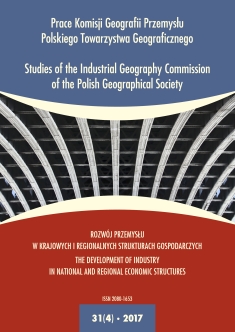Acquisitions of European Companies as Examples of Chinese Foreign Investment
DOI:
https://doi.org/10.24917/20801653.314.9Keywords:
acquisitions, capital flow, China, Europe, investmentAbstract
In recent years we have observed a more and more intensive capital expansion of Chinese companies. A manifestation of this process are the acquisitions of European companies whose value and number is constantly growing. The main objective of Chinese investment in Europe is gaining access to production technology that is in the possession of advanced companies. This is necessary in connection with the reforms currently undertaken by the Chinese authorities. An important motive of acquisitions is also the desire of acquiring well-known brands, in order to improve the image of the products manufactured in China. Together with the increase of the value and number of acquisitions of European enterprises, there is a visible diversification of sectoral activities of the acquired businesses. This may be a sign of a positive trend and indicate a high potential of Chinese investors. Despite the fact that companies from the Middle Kingdom are new players on the European foreign investment market, for many crisis-ridden companies from western countries they are an important source of capital necessary for further operation.Downloads
Metrics
References
AEI (2016, 31 grudnia). Dane statystyczne udostępniane przez American Enterprise Institute. Pozyskano z http://www.aei.org/
Casaburi, I. (2016, 10 października). Chinese Investment in Europe 2015-16. ESADE China Europe Club. Pozyskano z: http://www.esadegeo.com/
Clegg, J., Voss, H. (2016). The new two-way street of Chinese direct investment in the European Union. China-EU Law Journal, 5, 79–100. Doi:10.1007/s12689-016-0063-x
Dollar, D. (2015, 15 sierpnia). China’s rise as a regional and global power: The AIIB and the ‘one belt, one road’. Horizons. Pozyskano z https://www.brookings.edu/research/chinas-rise-as-a-regional-and-global-power-the-aiib-and-the-one-belt-one-road/
Dreger, C., Schüler-Zhou, Y., Schüller, M. (2016). Determinants of Chinese Direct Investments in the European Union. DIW Berlin Discussion Paper, 1480, 1–19.
Hanemann, T., Huotari, M. (2015) (2016, 15 listopada). A New Record Year for Chinese Outbound Investment in Europe. The Mercator Institute for China Studies. Pozyskano z https://www. merics.org/en/press-contact/press-releases/a-new-record-year-for-chinese-outbound-investment-in-europe/
Kennedy, S. (2015, 1 czerwca). Made in China 2025. Center for Strategic and International Studies. Pozyskano z https://www.csis.org/analysis/made-china-2025
Koszek, R. (2014). Chińskie inwestycje w Europie w czasie światowego kryzysu gospodarczego. Prace Studenckiego Koła Naukowego Geografów Uniwersytetu Pedagogicznego w Krakowie, 3, 46–62.
Kroeber, A.R. (2016). China’s Economy: What Everyone Needs to Know? Nowy Jork: Oxford University Press.
Liberska, B. (2010). Perspektywy rozwojowe chińskiej gospodarki do 2050 roku. Studia Ekonomiczne, 4, 331–358.
OECD (2016, 31 grudnia). Dane statystyczne Organizacji Współpracy Gospodarczej i Rozwoju. Pozyskano z http://www.oecd.org/
Oziewicz, E. (2015). Rola Chin we współczesnej globalnej gospodarce. Gdańskie Studia Azji Wschodniej, 8, 142–151.
Shambaugh, D. (2013). China Goes Global: The Partial Power. Nowy Jork: Oxford University Press. Sulmicki, J. (2015). Chiny umacniają dominującą pozycję w gospodarce światowej. Zeszyty Naukowe Uczelni Vistula, 41(3), 33–44.
Szunomar, A. (2016, 7 grudnia). The characteristics, changing patterns and motivations of Chinese investment in Europe. Friends of Europe. Pozyskano z: http://www.friendsofeurope.org/ global-europe/the-characteristics-changing-patterns-and-motivations-of-chinese-investment-in-europe/
UNCTAD (2016). World Investment Report. Genewa: United Nations.
Downloads
Published
How to Cite
Issue
Section
License
Articles are published under the terms of the Creative Commons License (CC BY-ND 4.0; Attribution– NoDerivs).

